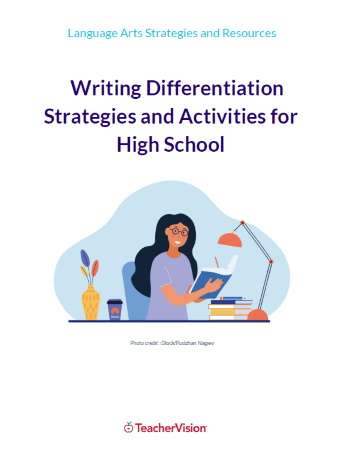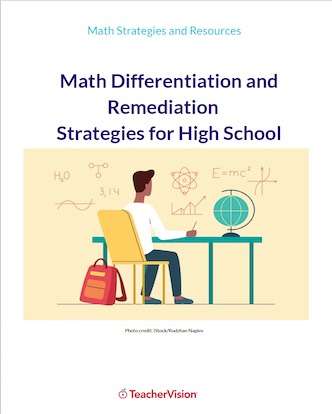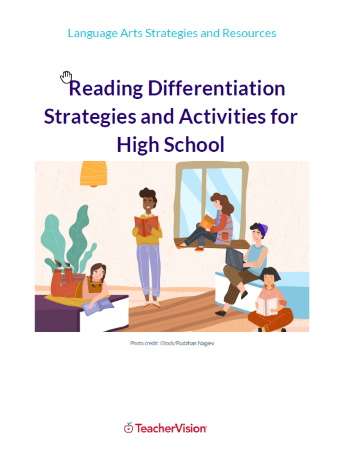Money-Saving Tips for Teachers
by Holly PoulosAccording to a survey conducted by the National School Supply and Equipment Association (NSSEA), teachers spent an average of $398 of their own money on supplies for their classroom during the 2009-2010 school year, plus an additional $538 on instructional materials, for a whopping $936!
But you don't need to spend a lot to ensure that your students have all the materials they need for engaging activities. Follow our tips to cut down on the amount of supplies you buy. You'll save money and reduce waste, thereby helping the environment!
Say It Online
Every year you probably send pages and pages of letters home to parents. Not only does this type of correspondence take up lots of your time; it also creates a lot of paper waste. Consider emailing parents, instead. Maybe you wouldn't use email for the first "welcome to the classroom" letter of the year, but for other interim notices or reports, email works just fine. Ask parents for their email addresses during your first contact with them, or reward students for bringing in their parents' email addresses. (You may want to find out whether parents have any objections to communicating via the Internet.)If you'd like to keep parents up-to-date with what's going on in your classroom, create a blog or website that they can visit. This would further reduce the need for paper communication! If you have computers in your classroom for student use, your students can even update the website for you. A class website would integrate technology lessons into your classroom and involve parents, while still being tied to the subject matter.
Free, easy-to-use blogging and website tools include the following:
- Blogger (http://www.blogger.com/home)
- Live Journal (http://www.livejournal.com/)
- Weebly (http://www.weebly.com/)
- Word Press (http://wordpress.com/)
Recycle for Art's Sake
Keep a scrap-paper bin for future art projects. This cuts down on waste and prevents you from having to pay out-of-pocket for colored paper and magazines to use in the classroom.Group Work
Print out just a few worksheets for your entire class, and save paper and school funds. Divide your students into small groups and have them work as teams to complete the activities. Group work enhances students' social and cooperative skills. Plus, with fewer students filling out worksheets, there will be fewer papers for you to grade.- Cooperative Learning Strategies
- What Is Cooperative Learning, and What Does It Do?
- Group Activity Rubric
- Group Self-Evaluation
Similarly, instead of asking your school (or your students) to buy a novel or textbook for each student in your class, buy just one or two copies and pass them around to be read aloud. This strategy won't work if you use the book for many or long assignments, but if you're assigning only one essay, short story, or article from the book, it's not necessary for each student to have a copy.
Books: Borrow & Buy Used
Every classroom needs a great library, but purchasing all those books can take its toll on your budget. There are alternatives. You can use your school or local library to borrow books for the classroom â just don't lend them out to students, or you may be stuck with a fine. Tired of the books you've been assigning to your class for the last five years? You can also swap with fellow teachers to make your collections go further.Another option is buying used books; many cities and towns have used-book stores where you can shop, and you can also buy used books online. Some websites even allow you to "swap" your books for ones they have posted â you pay nothing but the shipping charge.
- Alibris (http://www.alibris.com/)
- Amazon (http://www.amazon.com/)
- PaperBackSwap (http://www.paperbackswap.com/index.php)
- Powell's Books (http://www.powells.com/)
Ask for Donations
Ask students and parents to donate used goods to the classroom, such as magazines, books, and writing utensils. Ask each student to bring in an important item for the classroom (think tissues, hand soap, and paper towels) and reward the class when everyone participates. Possible rewards include an extended recess, a movie day, or free computer time.Donations don't have to stop with parents. Ask local store owners for donations, as well. You may be surprised by how much stuff they're willing to let you have for free. In The Complete Idiot's Guide to Success as a Teacher, Anthony D. Fredericks writes, "I've gotten wallpaper samples from the local paint supply store, which we used to create our own homemade books. I've begged for travel brochures from the local travel agency, as part of our study of European countries. By asking (pleading, begging) for materials and supplies from your hometown merchants, you can quickly make up for any deficiencies in the school budget." Read more of his tips in " On the Hunt for Supplies."
Another option is to let people in your community know what you need for your classroom. The website for I Love Schools, Inc. (http://www.iloveschools.com/) allows teachers to register their classrooms for a variety of goods they would like to add to the classroom. The website sets them up with donors who can supply teachers with what they need. This is all done at no charge.
Bulk Up & Team Up
When you do have to buy supplies with your own money, look into bulk-buy stores. The cost of pencils, paper, and stickers can be reduced dramatically when purchased from large discount stores instead of smaller retail stores. If you don't think you'll ever use all 1,000 sheets of colored construction paper, or don't have much storage space, ask another teacher to go in on these purchases with you. You spend less money up front and still benefit from the discounted prices.Read It Online
Instead of printing out book excerpts and other short readings for each of your students, provide them with a Web address and have them read it online. If you have computers available for student use, you could give them classroom time to read it. You could also assign the reading for their library-time or homework. Look for books that have been published online with corresponding literature guides.Hand-Me-Downs
Do you know of fellow teachers who are moving to a higher or lower grade next semester? They probably won't need a lot of the supplies they've collected over the years. Ask them for their hand-me-downs. You can even make a trade, if you have supplies or other goods that you don't need anymore. Have your neighbors' kids outgrown their crayons and building blocks? Ask for their old toys.Thrift Shop
Flea markets, garage sales, and "dollar" stores are all excellent places to buy supplies and rewards for students. Or, set up a "yard sale" at your school. Ask teachers across the grades to collect materials they no longer use or would be willing to give up, and set up tables for materials to be traded or sold for a small price. This is a great way to socialize with other teachers, as well!Online Learning
Much of the average teacher's budget goes towards the purchase of educational computer programs for student use, but you'd be surprised at what you can find on the Internet for free. In addition to the expected resources you can find online to use in your classroom â free encyclopedias, dictionaries, newspaper articles, and more â your students can also enjoy playing free online games. Check out these sites, which feature educational games and reference materials for students, all in a safe environment:- Fact Monster (http://www.factmonster.com/)
- Funbrain (http://www.funbrain.com/)
- Infoplease (http://www.infoplease.com/)
- PBS Kids Go! (http://pbskids.org/go/)
Keep Your Receipts
Many teachers don't know that they can take a tax deduction for some of the money they spend out-of-pocket for classroom supplies. The maximum deduction is $250, and it applies for purchases of books, supplies, and computer equipment. Most teachers, aides, and administrative personnel who work at least 900 hours per school year are eligible. Visit the IRS website for more information, or talk to your accountant or a tax specialist.Hold a Fundraiser
Hold a fundraiser to help increase your supply of classroom goods. Invite students, parents, and other community members to attend. Get your students involved; they can read stories to younger children, set up a face-painting booth, or sell homemade baked goods. You can hold a raffle: Collect money for each ticket (anywhere from $1 to $5), then raffle off half of the pot. The other half goes to your classroom's library or art supply fund.




